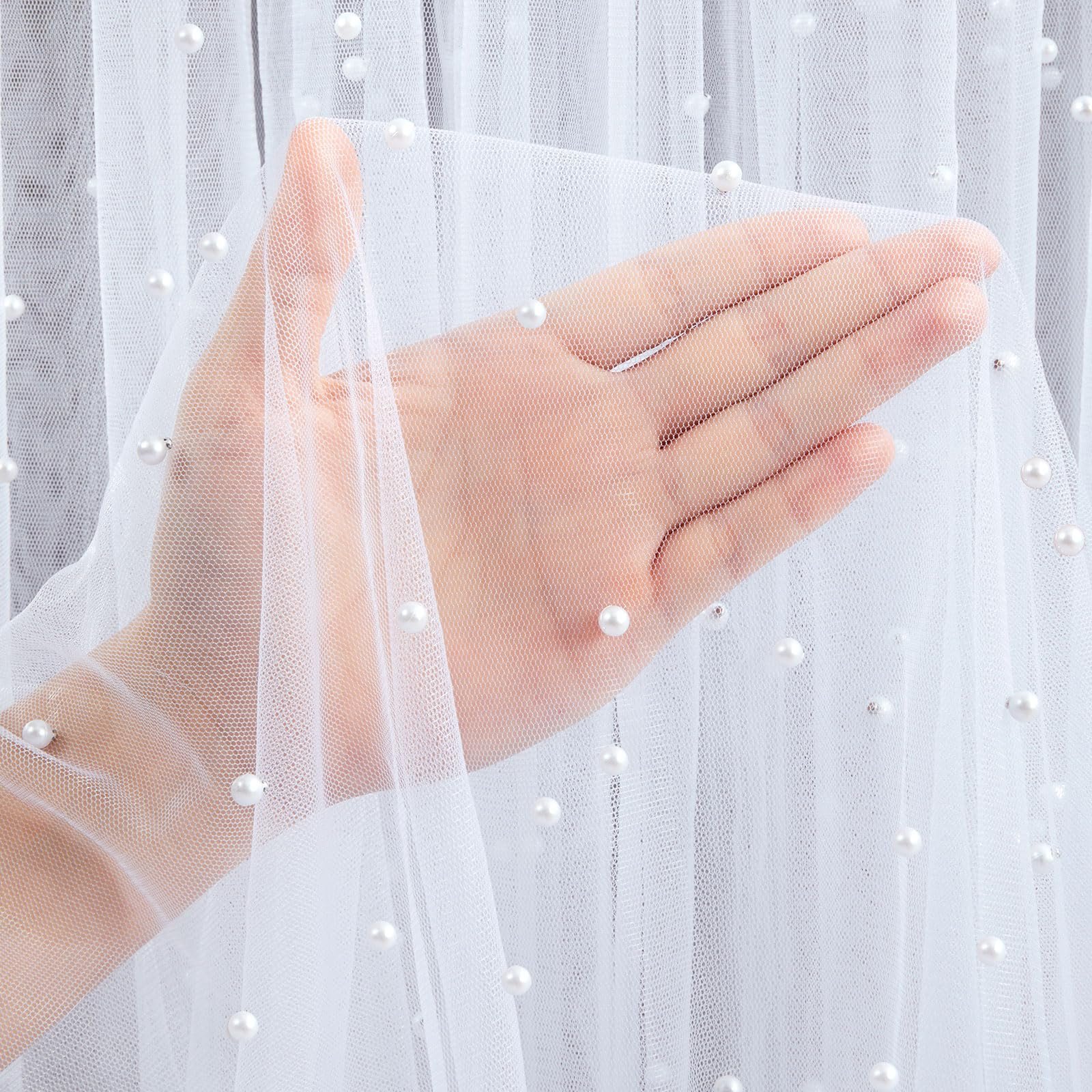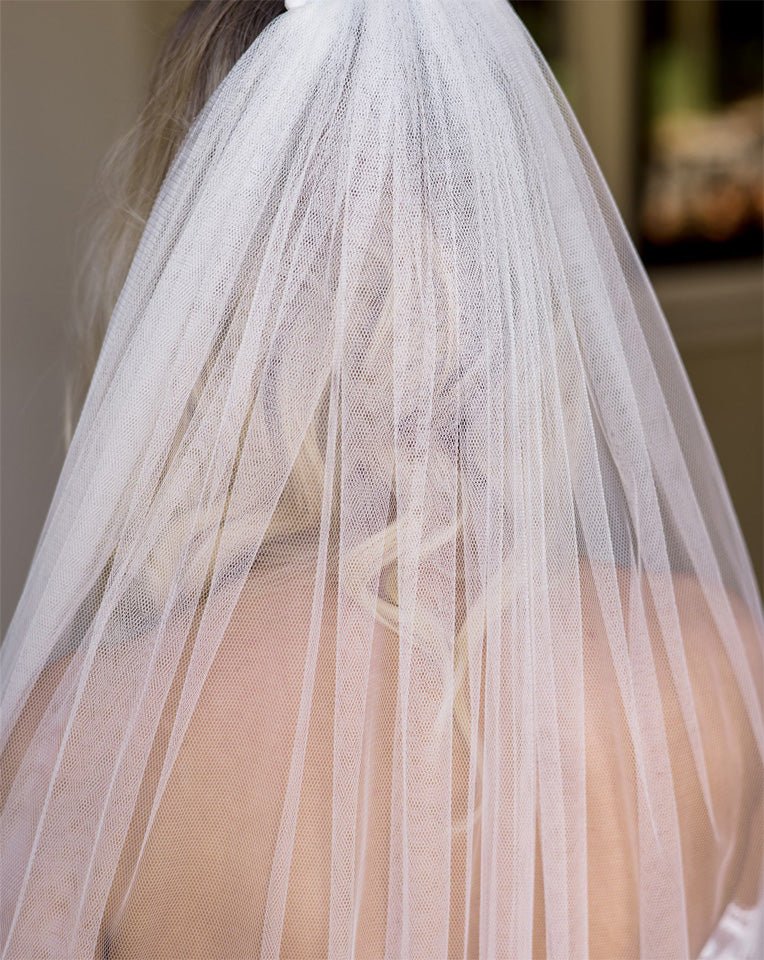When envisioning a dream wedding, delicate textures, airy silhouettes, and romantic layers often come to mind. At the heart of this aesthetic lies a single, transformative fabric: bridal tulle. Known for its lightness, softness, and ethereal quality, this material has become essential in bridalwear—shaping everything from flowing gowns and elegant veils to whimsical accessories and ceremony décor.

What Sets Bridal Tulle Apart?
Bridal tulle is a specialized version of netting fabric made from fine yarns such as silk, polyester, or nylon. While regular tulle can be coarse or stiff, bridal-grade tulle is chosen specifically for its softness, drape, and visual delicacy. Unlike heavier materials like satin or taffeta, tulle creates volume without weight and adds dimension without overwhelming the silhouette.
What makes it truly special is its versatility. It can be structured into full skirts, softened into sheer overlays, or gathered into veils that seem to float in the air. Whether you’re going for classic elegance or modern minimalism, tulle can be tailored to your personal bridal style.
Tulle in Wedding Dresses: Softness, Volume, and Elegance
Tulle is often featured in wedding gowns for its ability to create volume and shape. Designers frequently use it in:
-
Ballgown skirts for a dramatic, princess-like effect
-
A-line dresses to add subtle fullness
-
Mermaid silhouettes with soft flares at the hem
-
Bodices and sleeves to incorporate illusion designs with lace appliqué or beadwork
Multiple layers of tulle can be used to build dimension, while strategically placed lace or embroidery enhances the texture. When used skillfully, tulle allows for movement and flow, catching light beautifully and adding depth to each step down the aisle.


Veils: Where Tulle Truly Shines
The most iconic use of tulle in bridalwear is the veil. From fingertip and elbow lengths to chapel and cathedral veils, tulle is the go-to material thanks to its sheer beauty and lightness. The simplicity of a single-layer veil made of soft tulle can be just as breathtaking as an embellished, lace-edged design.
What’s more, veils made from tulle are easy to style with different hairstyles and dresses. Brides looking for something unique can opt for blushers, mantilla-style veils, or modern cape veils—each offering its own interpretation of tradition and elegance.
Types of Tulle Used in Bridal Fashion
Understanding the different types of tulle can help brides and designers choose the right one for their needs:
-
Silk Tulle: Ultra-soft, luxurious, and the most expensive. Best for veils or high-end gowns.
-
Nylon Tulle: Offers more structure and body, ideal for full skirts and puff sleeves.
-
Polyester Tulle: A cost-effective alternative that mimics silk but with more durability.
-
Illusion Tulle: Extremely fine and nearly invisible, often used for illusion necklines and sheer sleeves.
-
Glitter or Embroidered Tulle: Features added sparkle or intricate designs, perfect for statement looks.
Each type has a unique texture, weight, and drape, which affects how it moves and feels on the body. The choice of tulle can transform the entire vibe of the dress—from vintage glamour to boho chic.
Accessorizing with Tulle: More than Just Dresses
Tulle isn’t limited to dresses and veils. It’s often incorporated into:
-
Capes and overskirts that can be removed for a second-look style
-
Tulle bows on the back of dresses, belts, or hairpieces
-
Decorative gloves, sashes, and shoulder wraps
-
Bridal bouquet wraps or pew decorations at the ceremony
Tulle’s ability to be dyed, layered, and embellished makes it a favorite for creating cohesive wedding themes that extend beyond the gown itself.
Styling Tips: Getting the Most from Tulle
When incorporating tulle into a bridal ensemble, balance is key. Here are a few expert tips:
-
Layer strategically: While layering adds volume, too much can feel bulky. Soft layers work better for elegant drape.
-
Mix with other fabrics: Pair with lace, organza, or satin for texture contrast and visual interest.
-
Mind the movement: For dramatic entrances and photography, consider softer tulle that flows gracefully.
-
Choose your hemline wisely: Raw-cut tulle offers a floating effect, while finished hems give a polished edge.
When selecting accessories, keep them minimal if your dress has multiple tulle layers or glitter accents—this ensures your overall look remains balanced and elegant.
Care Instructions for Tulle Garments
Tulle may look delicate, but with proper care, it can last for years—perfect for heirloom dresses or veils. Here’s how to preserve it:
-
Use a garment steamer rather than ironing to avoid melting or damage
-
Store in a breathable bag, hanging up to prevent wrinkling or crushing
-
Avoid sharp jewelry or embellished surfaces that may snag the netting
-
Choose dry cleaning, especially for tulle combined with lace or beading
Post-wedding, many brides preserve their gowns and veils as keepsakes. Tulle tends to hold its shape well when stored properly and can be repurposed into christening gowns, accessories, or memory quilts.

Why Bridal Tulle Endures
The lasting popularity of bridal tulle lies in its balance of lightness, beauty, and versatility. It speaks to timeless romance while accommodating modern design trends. Whether you’re walking down the aisle in a fairytale ballgown, a minimalist sheath dress, or a flowing boho number, tulle has a place in your story.
With advances in textile innovation, sustainable and recycled tulle options are also now available—allowing brides to stay eco-conscious while still achieving their dream aesthetic.
Final Thoughts
Tulle is more than just a fabric—it’s a medium of expression for brides around the world. Its delicate structure, fluidity, and charm make it ideal for bridal fashion in every form. From the first fitting to the final twirl on the dance floor, tulle brings a special kind of magic to the moment.
Whether featured subtly in a veil or dramatically layered in a couture gown, tulle continues to captivate designers and brides alike—making it a timeless symbol of elegance and celebration.
